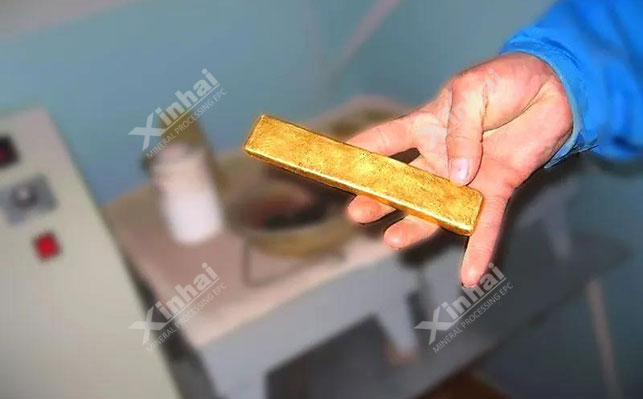Gold, a highly valued precious metal, has played a significant role in human history for millennia. From jewelry and coins to investments and industrial applications, gold's allure has transcended time and culture. However, gold is not found in its pure metallic form in nature; instead, it is typically embedded within gold ore deposits. The process of extracting gold from ore involves a complex series of steps and sophisticated technologies. In this article, we will delve into the professional and intricate methods used to extract gold from its ore.

The first step in extracting gold from ore is exploration. Geologists conduct detailed surveys and investigations to identify potential gold deposits. Advanced geological tools, such as remote sensing, aerial surveys, and geochemical analysis, aid in locating promising areas for further exploration.
Once a potential gold deposit is identified, the next step is mine planning. Engineers and mining experts assess the deposit's size, depth, and composition to determine the most efficient and economically viable methods for extraction. Factors like environmental impact, safety measures, and access to necessary resources are also carefully considered in this phase.
There are various gold ore processing methods, but the most commonly used techniques include:
a. Crushing and Grinding: The extracted ore is first crushed into smaller pieces to increase its surface area, making it easier to extract gold from the surrounding rock. This crushed ore is then ground into a fine powder using ball mills or similar equipment.
b. Gravity Separation: Gravity separation is a widely used method to separate gold from other minerals and impurities. It takes advantage of gold's high density to separate it from lighter materials through processes such as jigging, shaking tables, and centrifugal concentrators.
c. Cyanidation: Cyanide leaching is a crucial process used to extract gold from low-grade ores or finely ground ore particles. In this process, a dilute solution of sodium cyanide is added to the ore slurry, which reacts with gold, forming a soluble gold-cyanide complex. The solution is then separated, and gold is precipitated from it using various methods, such as carbon absorption or zinc precipitation.
d. Flotation: Flotation is employed when the gold ore contains sulfide minerals, such as pyrite or arsenopyrite. The ore is mixed with water and various chemicals, and air is pumped through the slurry. The hydrophobic particles attach to air bubbles and rise to the surface, where they can be collected and further processed to isolate the gold.
After the gold is extracted from the ore, it is typically in the form of impure doré bars or gold-containing concentrate. These materials must undergo further refining and smelting to achieve the desired level of purity.
a. Refining: The refining process aims to remove any remaining impurities and separate the gold from other metals, such as silver and platinum. One common method is the Miller process, which involves passing chlorine gas through the molten gold, forming soluble gold chloride. Impurities react with the chlorine and are removed, leaving behind high-purity gold.
b. Smelting: Smelting is the process of melting the gold concentrate to separate it from the impurities. The use of high temperatures causes the impurities to oxidize or vaporize, leaving behind pure molten gold. This molten gold can then be cast into ingots or further processed into various gold products.
Gold extraction from its ore can have significant environmental impacts if not properly managed. The use of toxic chemicals, such as cyanide in cyanidation, raises concerns about water pollution and ecosystem contamination. Miners and mining companies must adhere to strict environmental regulations and adopt sustainable practices to mitigate these impacts.
The process of extracting gold from its ore is a complex and intricate endeavor that requires expertise in geology, mining engineering, metallurgy, and environmental science. From exploration and mine planning to refining and smelting, each step plays a vital role in ensuring the efficient extraction of this precious metal.
The importance of responsible and sustainable mining practices cannot be overstated, as environmental conservation and social responsibility must go hand in hand with gold extraction. As technology continues to advance, we can hope for even more efficient and environmentally friendly methods to extract gold from its ore in the future. With the world's gold reserves becoming increasingly scarce, the responsible extraction and utilization of this precious metal will be of paramount importance for generations to come.